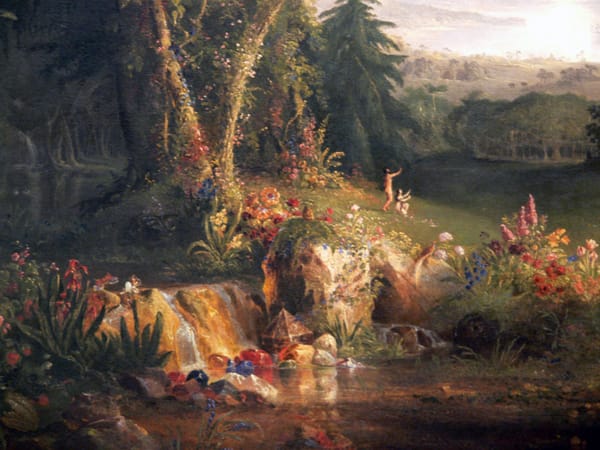MLM Canon
Graph theory, flippant orthodoxy, and lighting the beacons.

It is well observed that most play at the table occurs with locality: we have a shared conception of what fictional elements are immediately interactable (within the present scene, room, hex). Everything else is some distance away and connected by a transition, door, path. Your fictional agent (player character) needs to traverse this connection prior to interaction with the elements at the next locality.
There are a multitude of ways to order our thoughts while prefiguring our imaginary worlds (these reference more modern or comprehensive accounts of each technique, rather than the messier pursuit of trying to define their origins):
- Dungeoncrawl (All Dead Generations)
- Hexcrawl (Prismatic Wasteland)
- Pointcrawl (Hill Cantons)
- Depthcrawl (Gardens of Ynn and Stygian Library)
- Scenes (Angry GM)
- Flux spaces (Papers & Pencils)
- Labyrinth move (The Gauntlet's Twitter)
The unifying elements of these techniques are points (nodes, vertices) and lines (links, edges) in terms of graph theory, and this set of specific techniques may be genericized. I prefer these terms, as they are relatable to the process of mapping for game preparation, and align with the concept of Points of Interest.
It seems generally desirable for any of these forms to be:
Multivalent: There are several lines to and from each point, naturally producing branches and loops in navigation paths. Redundancy adds robustness (such as having multiple clues in case one is missed or misinterpreted).

Multivalency
Living. The points & lines themselves, not just their habitants, should be moving & changing over time and with interaction. Doors become barred, corridors caved-in, game trails flooded away, or paved roads barricaded by a camped army.

Living
Multifarious: Both points and lines should have varied character: large & small, long & short, high & low, inside & outside, one-way & hidden/secret. It is memorable to steal into the king's chambers via the toilet, or bypass a dungeon floor by spelunking a transecting ravine, or criss-cross between a pair of submerged divine towers.

Multifarious
In honour of our Lord and Saviour of the pithy roleplaying troika (though not that one), Chris McDowall, I decree these found natural laws of Good gaming shall henceforth be known as the MLM Canon.
Coda: Ensuring looped and varied connections in dungeon maps specifically has been dubbed Jaquaysing, after the inimitable Jennell Jaquays, who authored the previously alluded to Caverns of Thracia and Dark Tower.
Jennell has been afflicted since mid October with severe Guillain-Barre Syndrome, a life-threatening acute neurological illness that has nearly paralysed her and required insertion of a tracheostomy for prolonged mechanical ventilation to breath for her. A best case scenario is despite ongoing slow recovery of her strength, she will need months of physical rehabilitation to walk again.
Her wife is running a Go Fund Me to help cover the extensive medical costs: please check the campaign and consider if you are in a position, and feel moved, to give your financial support to a luminary of the hobby. Jennell arguably never achieved the commercial success owed by the impact of her work. She needs the aid of fellow adventurers, including love and messages of support, now more than ever. Light the beacons.
EDIT (2024-01-23): Jennell has subsequently left us on 10th January 2024, and her surviving family are still looking for support with her medical expenses at the link above. I have also taken the liberty of editing this post to remove references to the work of an individual who I no longer wish to acknowledge or associate with. Ours is a small hobby, but we are big enough to not have to put up with bad apples. Best to just leave them alone on the ground, to slowly rot and become mulch for new shoots in the Spring.




